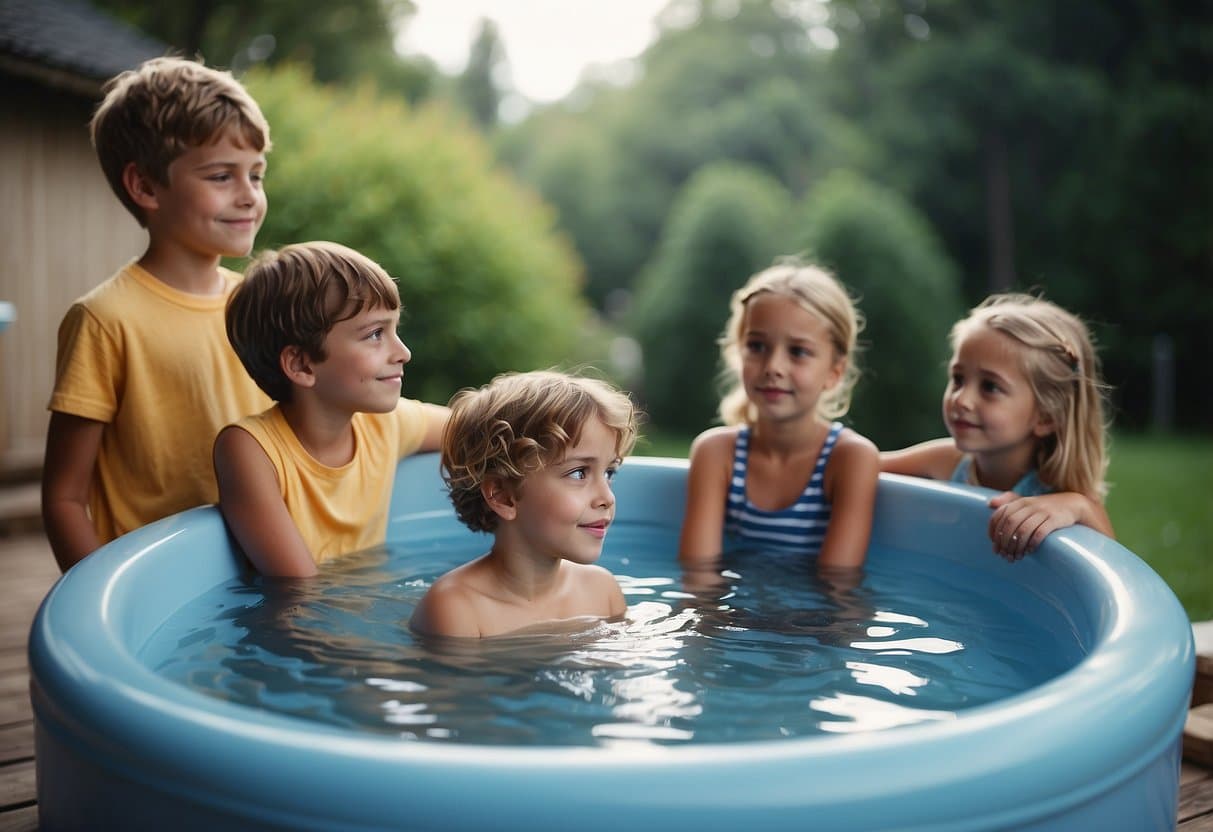If you’re a parent who loves that bubbling hot spot in your backyard and you’re wondering if your kids can join in, you’ve come to the right place. The simple answer? There are other factors besides age.
Hot tubs are excellent for unwinding and fostering family bonds, but they’re not always kid-friendly. Before allowing your children to dip their toes (literally), you should take some crucial safety measures that could mean the difference between a fun family outing and an emergency room visit.
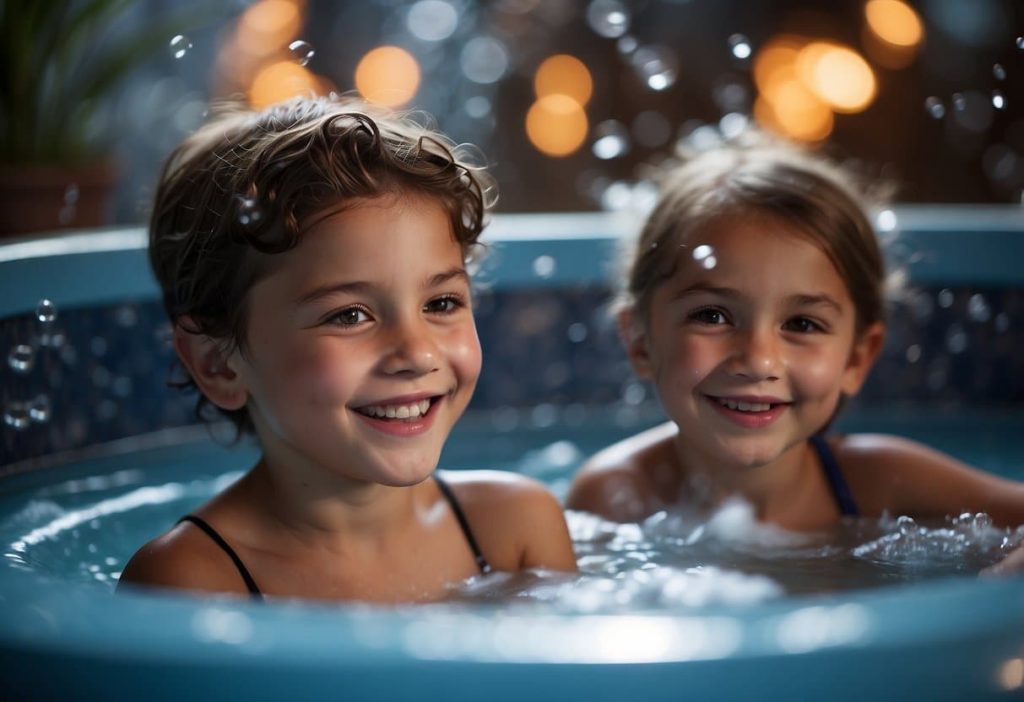
Parents Should Know These Things Before Their Kids Jump In
Age Restrictions: The True Importance of Size and Age
To put it plainly, children under the age of five should never—I mean, never—enter a hot tub. Their small bodies cannot handle it.
Think of a child’s body as a small engine trying to cool down a bigger problem. Children are hotter and more challenging to cool down than adults because of their significantly higher surface-area-to-body-weight ratio. A temperature of 102°F, which you might consider comfortable, could easily push a toddler into the risky realm of overheating.
Even for kids over five, though, it’s not a free-for-all. In this case, it is actually beneficial to follow the very explicit guidelines set forth by the Consumer Product Safety Commission (CPSC). Children ages five to twelve can use the hot tub, but only during specific hours and under strict supervision. We’re talking about 5–10 minutes at most, but adults prefer 20–30 minute sessions.
Teenagers also need boundaries, which may surprise you. Their bodies are still developing, so they do not yet have the same level of heat tolerance as adults, even though they can withstand longer sessions than younger children.
This is supported by research from the American Academy of Pediatrics, which shows that children’s core body temperatures rise noticeably faster than adults’ when they are exposed to extreme heat. Safety measures are therefore based on real physiology and are not just suggestions.
Understanding the Essentials of Hot Tub Safety That All Parents Need to Understand
There is more to hot tubs than just roomy, comfortable bathtubs. Because of their strong jets, circulation systems, and temperature ranges (usually between 100 and 104°F), they are intricate systems with unique safety challenges.
While most residential hot tubs maintain temperatures between 100°F and 104°F, a typical bath is between 98°F and 100°F. That four-to-six-degree difference? It’s huge in terms of child safety. In less than ten minutes, a child can develop heat exhaustion at 104°F.
The jets add another level of complexity. Those powerful streams could easily topple or pull under small children, even though adults like relaxation and hydrotherapy. Furthermore, because of the suction from drains and jets, kids with long hair or loose swimwear are particularly susceptible to becoming trapped.
Most people don’t know that drowning in a hot tub isn’t the same as drowning in a movie. It is often silent and can occur in as little as two inches of water. The tub’s depth and slippery sides could cause children to trip over nearby wet surfaces, fall in, and become trapped.
Adult supervision is not only recommended, but also necessary. Not checking your phone while the kids are playing is known as active supervision. You need to be on call, closely monitor the situation, and be ready to act at any time.
The importance of safety covers and barriers is also emphasized by the CPSC. A suitable hot tub cover that locks and can support weight could literally save a child’s life by preventing unattended access. Children are inherently curious and are drawn to an open hot tub, let’s face it.
The Real Risks: Possible Issues
The most frequent worry when talking about hot tub risks for kids is overheating, but it’s not the only one. I’ll tell you the truth about your situation.
Overheating and Heat Stroke
Children’s bodies do not regulate their body temperature the way ours does. They perspire less efficiently and have immature cardiovascular systems that cannot tolerate extreme heat stress. What happens? Their core temperature rapidly rising causes heat exhaustion or heat stroke.
Warning signs include flushed skin, a fast heartbeat, lightheadedness, nausea, and confusion. When you become aware of these symptoms, you are already in danger. Heat stroke can occur more quickly than you might think and can cause irreversible brain damage or even death in children.
The Process of Dehydration Is Rapid
Fluids are rapidly depleted by breathing and perspiration in a hot, humid hot tub. The warm water may mask early symptoms of thirst or exhaustion because children lose fluids much more quickly than adults do.
There is a considerable chance that a child who gets dehydrated in a hot tub will get a heat-related illness. Keep water handy and encourage frequent sips, even if they say they’re not thirsty.
The Silent Risk of Submersion
Drowning is the leading cause of death for children aged 1 to 4, and hot tubs present a unique drowning risk. This fact is sobering. Slick surfaces, water that is often deeper than children expect, and hot water (which can make you feel dizzy) are all ideal storm conditions.
In addition, children who trip and fall while playing in hot tubs often drown. The hot water may confuse them and make it harder for them to surface quickly.
Bacterial Infections
Hot tubs can harbor dangerous bacteria such as Pseudomonas (hot tub rash) and Legionella (Legionnaire’s disease). Since their immune systems are still developing, children are more susceptible to these infections.
Proper water maintenance is crucial because bacterial issues can arise in even well-maintained hot tubs. For this reason, many pediatricians advise against letting young children use public hot tubs at all.
Safe Hot Tub Practices: Preparing for Achievement
If you decide to allow your older children (five years and up) to use the hot tub, here are some guidelines for safe use.
Controlling the Temperature Is Essential
Maintain the water’s temperature at or below 100°F when kids are using it. Most adults find it cool, even though it’s the safest option for children. Use a reliable thermometer rather than the one that comes with the hot tub.
Before using the water, make sure to check its temperature. Water that appears to be just warm to a child may be too hot for them.
Time Limits Cannot Be Negotiated
A timer should not be set for more than ten to fifteen minutes. When it goes off, kids always leave. The difference between a medical emergency and a safe enjoyment could be determined by those extra “just five more minutes” requests.
During a “cool-off” time, let kids sit on the edge of the tub with just their feet in the water. This helps them acclimate and gives their bodies a chance to rest from the heat.
Station for Hydration
Place water bottles by the pool to encourage frequent sips. Everyone should make it a habit to take a drink every few minutes. Avoid caffeine-containing products and sugary drinks as they can make dehydration worse.
Look at Those Safety Features
Your hot tub’s drain covers should meet the most recent safety standards. These should be regularly inspected and changed as needed. Serious injuries and entrapment deaths have been caused by inadequate drain covers.
Make sure your hot tub’s cover is strong enough to support a lot of weight and that it locks securely. Verify whether a child could fall on it and sustain injuries. Otherwise, it isn’t enough protection.
Consider installing additional barriers, such as fencing or door alarms, to prevent unauthorized access. Having multiple layers of protection is always better than relying solely on one.
Creating a Space for a Kid-Friendly Hot Tub
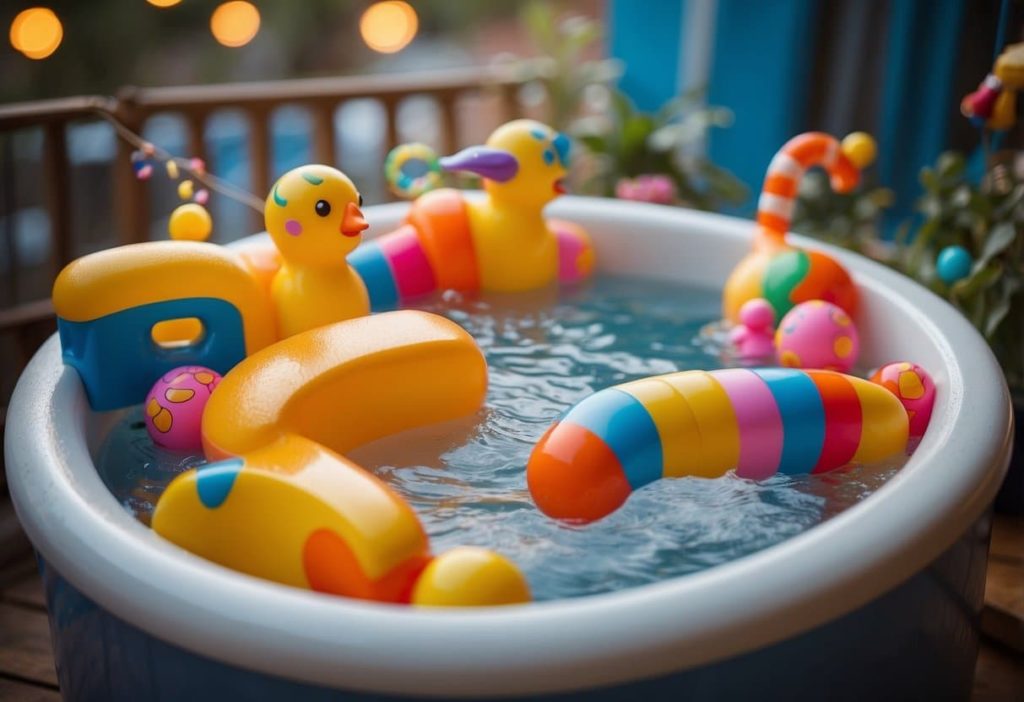
Making your hot tub safer for kids involves more than just following the bare minimum of safety regulations; it’s about creating an environment where safety is integrated into every aspect of use.
Maintenance Is More Vital Than You Think
Beyond the obvious benefit of having crystal-clear water, a well-maintained hot tub has other features. Regular maintenance steps prevent the growth of harmful bacteria that could make kids ill and preserves the proper chemical balance.
Make sure your water has between 2.0 and 4.0 parts per million of chlorine, and test it at least twice a week. The Pool and Hot Tub Alliance recommends daily testing if kids use the tub regularly. Even though it may seem like too much work, it is worthwhile for the health of children.
Clean the filters once a week if kids use the tub frequently. Bacteria and other contaminants that are particularly dangerous to children may be present in water that has not been thoroughly cleaned by dirty filters.
Installing Intelligent Safety Systems
Consider these improvements over the standard cover:
- A hot tub alarm sounds when the cover is removed.
- The entire bathtub is equipped with motion sensors.
- Handy emergency shut-off switches that are out of reach of small children
- There are non-slip surfaces all over the tub area.
Families have successfully implemented simple barrier systems, like detachable pool fencing or even decorative screens that block access when adults aren’t present.
Teaching Your Kids about the Safety of Spas
The fundamentals of hot tub safety can even be taught to young children. Enjoy yourself, but make it special:
- Avoid running near the hot tub.
- Avoid diving or leaping in.
- Stay away from the water.
- Always get an adult’s permission before entering or departing.
- If you feel sick or dizzy, leave immediately.
It’s critical to consistently remind children of these rules and to commend them when they follow them. The goal is to make safety a habit rather than a continuous thought.
Three Ways to Protect Your Hot Tub
It’s critical to secure your hot tub area to prevent accidents while you’re away. These three useful strategies can be applied to a variety of home styles and budgets.
1. Latch the Back Door First
This is often the cheapest and easiest option. Install a door lock or latch that is out of your children’s reach and at least 54 inches above the floor. It’s amazing how effective this simple barrier is.
Consider setting up a door alarm that will sound when the door to your hot tub area opens. These inexpensive, battery-operated devices can alert you if a child leaves the house unattended.
2. Improve Your Cover
Not all hot tub covers are created equal when it comes to kid safety. You’re looking for a weight-supporting cover that meets ASTM safety standards and can hold up to 485 pounds.
Look for covers with locking straps to improve spa hygiene and consider installing padlocks for extra security. Some of the more modern covers come with built-in alarms that will sound if they are tried to be taken off.
Because the energy savings alone often cover a respectable cover within a year, you’re protecting both your children and your pocketbook at the same time.
3. Close Off the Space Next to the Hot Tub
This is the best way to make sure your hot tub is safe if you regularly host families with kids or have a number of small children. An effective barrier fence should be at least four feet high and feature a self-closing, self-latching gate.
There shouldn’t be any gaps more than 4 inches in the area around the hot tub. This prevents children from squeezing through or becoming trapped.
Detachable stairs with gates may be something to consider for families with fully equipped hot tubs. These prevent children from climbing into the tub by themselves and make it simpler for adults to enter.
Health Concerns: When to Consult a Professional
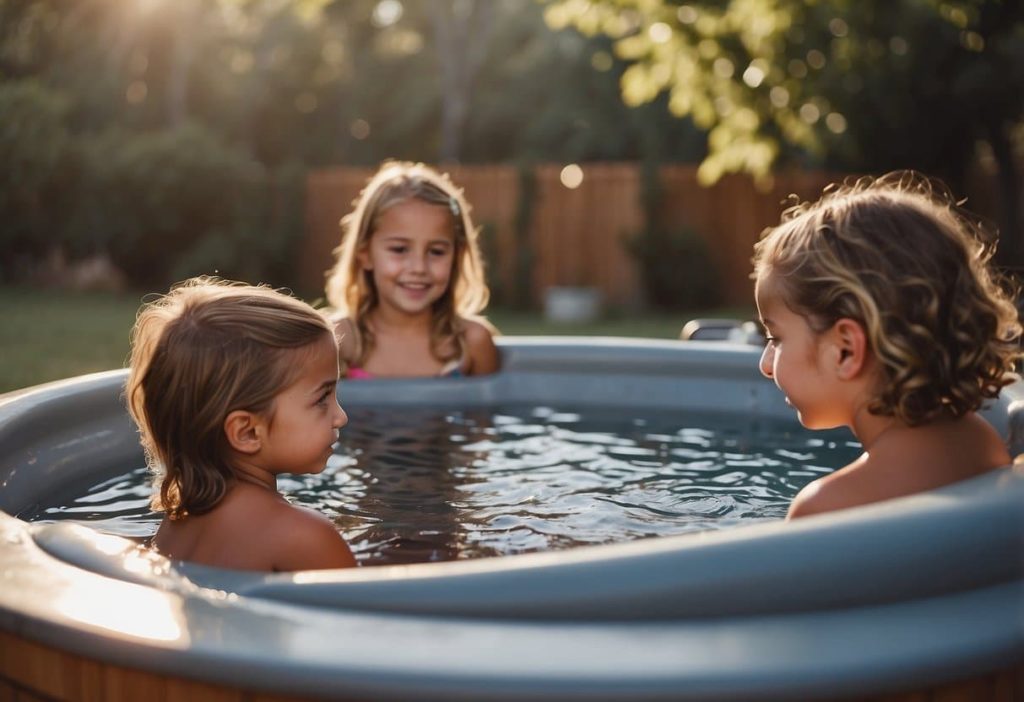
Consult your pediatrician before letting your kids use a hot tub, particularly if they have any health concerns. It’s not just overly cautious parenting; it’s smart safety planning.
Conditions That Need Special Attention
Children with diabetes, heart issues, or any other condition that affects circulation should definitely get medical clearance before using a hot tub. The heat and cardiovascular strain can be particularly dangerous for these kids.
People with asthma and other respiratory disorders may be impacted by the chemicals and humid atmosphere of hot tubs. You can talk to your child’s doctor about the risks associated with using a hot tub and the safety measures that are required.
Therapeutic Advantages Properly Provided
Hot tub therapy can help children with certain conditions, such as juvenile arthritis or muscle injuries sustained during sports. Following exact recommendations for temperature, frequency, and duration—as well as medical advice—is crucial.
A professional with training in the specific therapeutic approach should always supervise children’s hydrotherapy sessions. This necessitates different safety measures and supervision than using a hot tub for recreation.
Interactions between Drugs
Some medications can change how a child’s body regulates its temperature or responds to heat stress. If your child regularly takes prescription medications, ask their doctor or pharmacist about the safety of hot tubs.
This is particularly important for medications that change heart rate, blood pressure, or hydration levels.
Tips for Safe Vacation Hot Tub Use When You’re Not at Home
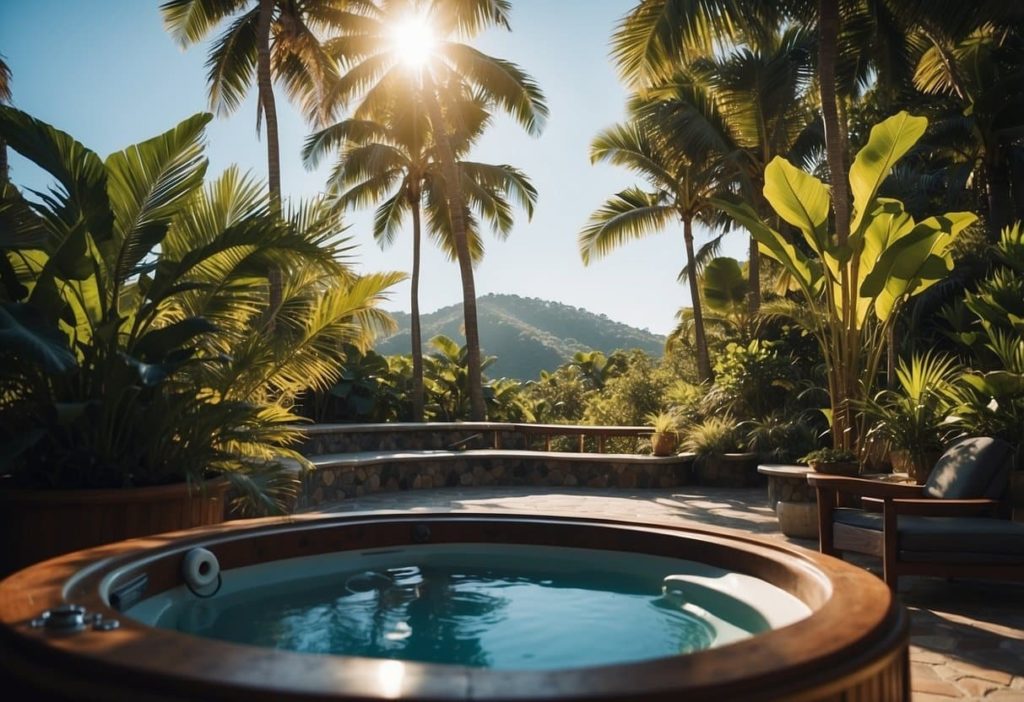
Family vacations frequently take place in hotels, resorts, and rental homes with hot tubs, which adds additional safety hazards for which you should prepare.
Hotels and Resorts with Hot Tubs
There are other commercial hot tub models that meet safety standards besides yours. Before letting your kids use hotel or resort hot tubs, do a quick safety check:
- Check the water’s clarity and smell (it shouldn’t smell strongly of chemicals).
- Seek out suitable, secure, and undamaged drain covers.
- Verify that the safety signs are displaying the appropriate temperatures and times.
- Ask the employees when the water was last inspected and cleaned.
Many hotels maintain their hot tubs hotter than is recommended for young visitors. Never be afraid to ask them to adjust the temperature or further limit your children’s leisure time.
Analyzing Rental Properties
It can be made even more challenging by the vast differences in upkeep needs for private rental properties. Ask the owner specific questions about the following before booking:
- The hot tub’s maintenance schedule
- Safety features like covers and barriers
- Methods for water analysis and chemical balance
- Where to find emergency shut-off locations
Verify that all safety features are operational before allowing any family time in the hot tub, and when you get there, check the water temperature.
Pack for Travel Safety
Bring a small hot tub safety kit on family vacations:
- A reliable thermometer for water temperature measurement
- Give the session a time limit.
- To stay hydrated, use water bottles.
- Essential medical supplies
- The contact information for the local emergency services
Although it may seem excessive, being prepared keeps a medical emergency from ruining your vacation.
Establishing the Rules for the Family Hot Tub
Creating consistent, clear rules for hot tub use encourages family fun while guaranteeing everyone’s safety. It is essential to make these rules unalterable and easy to remember.
The Crucial Rules
- When using a hot tub, an adult should be present at all times.
- Each session should not exceed ten to fifteen minutes for children under twelve.
- The water stays at or below 100°F when kids use it.
- Everyone drinks water before, during, and after their time in the hot tub.
- Running, diving, and rough play are not allowed in or near the hot tub.
- If you feel sick, dizzy, or uneasy, go immediately.
Keep these rules in plain sight and consult them often. Make using the hot tub mandatory.
Increasing Safety’s Fun Factor
Children respond more positively to rules when they understand the “why” behind them. Explain how following these rules guarantees everyone’s safety and allows them to continue using the hot tub. You might even create a system of incentives for consistently following safety guidelines.
By helping to set timers or check the water’s temperature, kids can take an active role in their own safety. Consider making safety inspections a part of your everyday schedule.
Age-Related Changes
As kids get older, you can progressively change some of the rules while maintaining the bare minimum of safety precautions. A 12-year-old might handle 15-minute sessions well, but a 6-year-old should keep their sessions to no more than 10 minutes.
Considering each child’s size, maturity, and ability to express their emotions while in hot water, individualization is essential.
Frequently Asked Questions
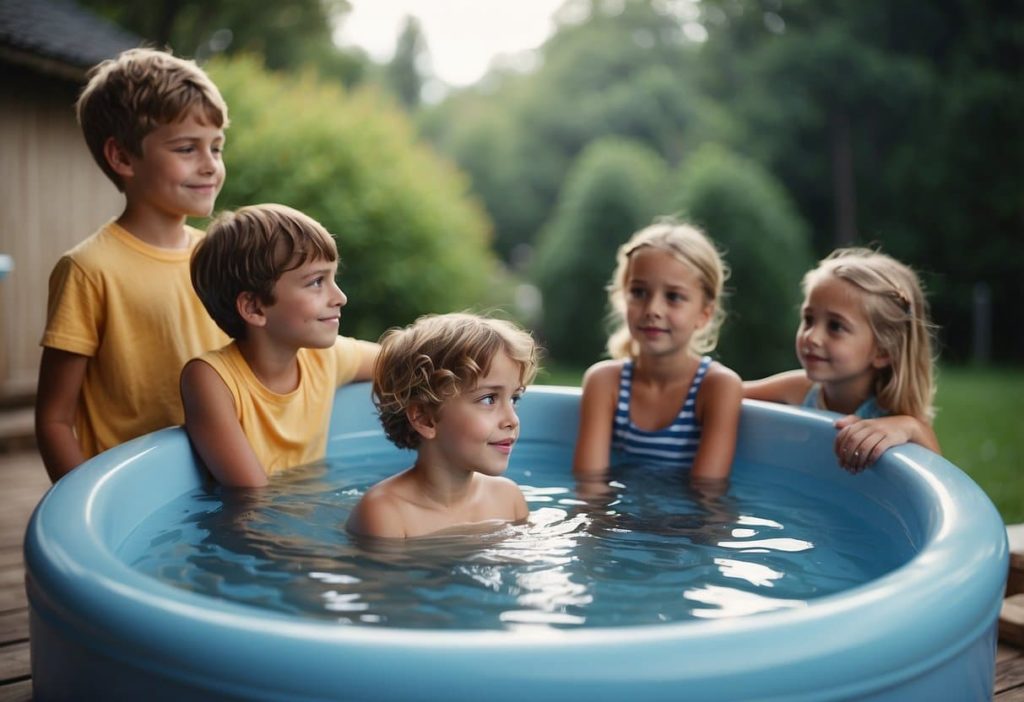
How old must a child be to use a hot tub safely?
The majority of experts concur that, with the right supervision and safety precautions, kids as young as five can safely use hot tubs. The heat stress is just too much for their developing bodies to cope with before the age of five. Even at age five, we’re talking about brief sessions—no more than ten minutes—under close adult supervision.
When is it safe for babies to get in a hot tub?
The problem with hot tubs is that there isn’t a temperature at which babies can safely bathe. Not at all. Regardless of the temperature, babies should never be in hot tubs. Babies can get dangerously overheated from even lukewarm water because their bodies are unable to regulate heat. Wait until they are much older before allowing them to use the hot tub.
Does Ontario have any age restrictions on using hot tubs?
Children and hot tubs are not specifically covered by any laws in Ontario, but that doesn’t mean anything is forbidden. It is still necessary to adhere to the health and safety regulations set forth by pediatric specialists and groups such as the CPSC. Common sense safety precautions should not be disregarded just because there is no law.
What rules about kids and hot tubs does the American Academy of Pediatrics provide?
No child under the age of five should ever be in a hot tub, according to the American Academy of Pediatrics. They advise sessions to last no more than a few minutes and water temperatures for older kids to not exceed 100°F (37.5°C). Additionally, they emphasize the significance of continuous adult supervision—not just being close by, but actively observing.
Is it safe for young children to use a hot tub?
Not at all. Hot tubs should never be used by toddlers (usually ages 1-3). They are particularly susceptible to severe injuries like drowning and overheating. They are still learning how to regulate their body temperature, and they have trouble expressing how uncomfortable they are. Don’t think about using a hot tub until they are at least five years old.
Can preteens use hot tubs without an adult present?
When using a hot tub, even preteens require adult supervision. Accidents can still happen quickly, even though they may be older and have better body temperature regulation skills than younger kids. Regardless of a child’s age or swimming ability, hot tub environments pose special risks, such as overheating and slipping on wet surfaces, that call for adult supervision.

